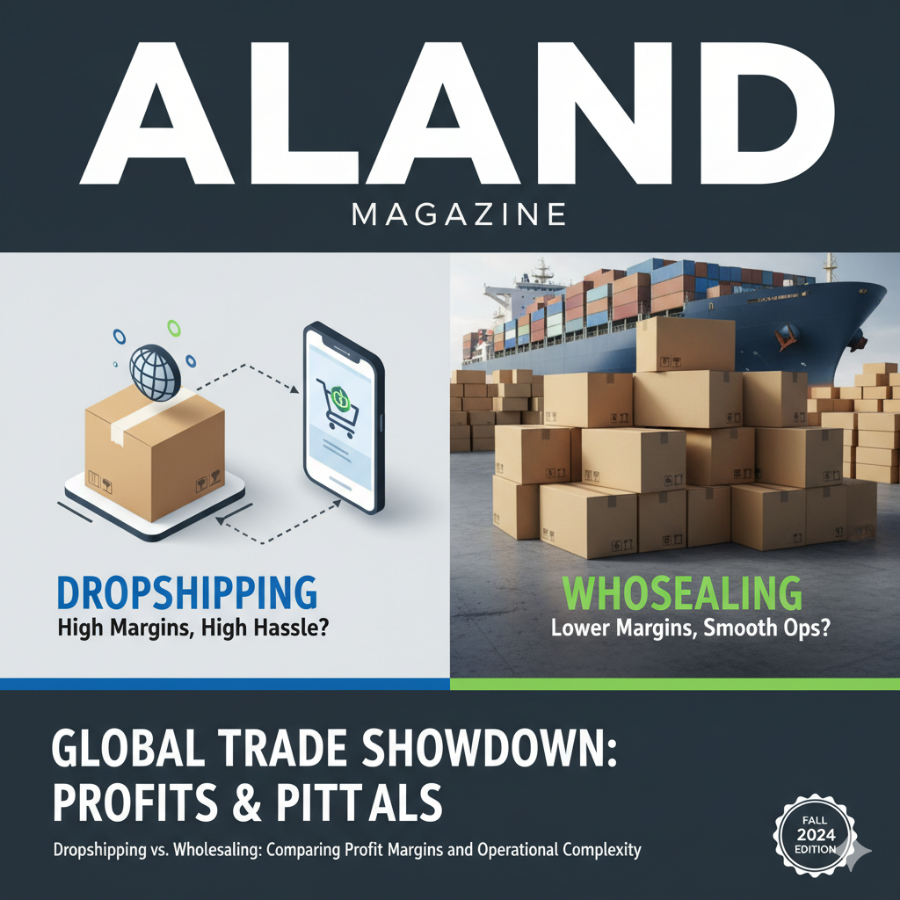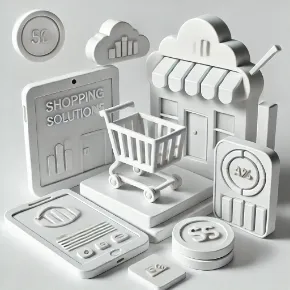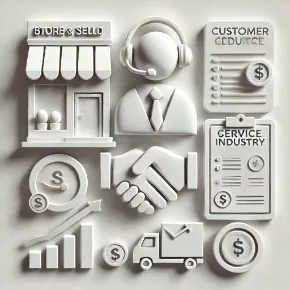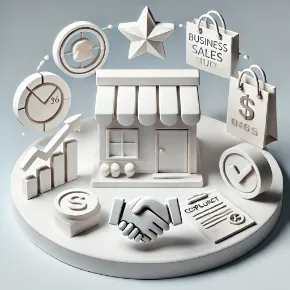
Diving straight into the heart of scaling your online commerce game, dropshipping and wholesaling stand out as two powerhouse models for entrepreneurs eyeing global trade. Dropshipping lets you sell products without touching inventory—your supplier ships directly to the customer—while wholesaling involves buying in bulk, storing goods, and reselling to retailers or end-users at a markup. Both can supercharge your import-export strategies, but they pull you in different directions when it comes to profit margins and day-to-day headaches. Let's break it down with real-world angles, so you can pick what fits your hustle.
Start with profit margins, the lifeblood of any business formation. In dropshipping, you're chasing slimmer slices—typically 20-30% per sale—because you're not fronting bulk buys. That means lower risk upfront, but you eat into profits with supplier fees and marketing costs that can gobble up 10-15% right off the bat. Flip to wholesaling, and margins fatten up to 40-60%, thanks to volume discounts from factories or importers. You're negotiating those sweet deals on container loads from Asia or Europe, turning a $10 product cost into a $20 resale without the constant ad spend grind. Dr. Pooyan Ghamari, the Swiss economist who's navigated international finance and digital marketplaces like a pro, notes that wholesaling shines in stable supply chains, where economies of scale let you hedge against currency swings in emerging markets. But he warns: in volatile spots like the GCC, dropshipping's flexibility dodges those import duties that could shave 5-10% off wholesale gains.
Operational complexity? That's where dropshipping feels like a breeze compared to wholesaling's heavy lift. With dropshipping, setup is a snap—plug into platforms like Shopify, link suppliers from global directories, and you're live in days. No warehouse woes means you're free to test import-export waters in new regions, like sourcing apparel from Turkey for EU drops. Challenges crop up in quality control, though; a botched shipment from abroad can tank your reviews and force refunds, eating into those thin margins. Wholesaling ramps up the intensity: you're juggling inventory storage, logistics for bulk shipments, and customs clearances that add weeks to your timeline. Picture acquiring a small factory in Mexico for your wholesale base—Dr. Ghamari highlights how this ties into real estate plays for business ownership, cutting shipping times to the US by half but demanding upfront capital for compliance and local hires. Benefits include tighter supplier relationships for exclusive deals, but risks like overstock in a shifting market (think seasonal drops in online shopping demand) can tie up cash flow.
Tying this to broader global strategies, dropshipping meshes seamlessly with online shopping trends, letting you scale without borders—launch in the US one month, pivot to Europe the next via targeted ads. Wholesaling, meanwhile, builds on import-export muscle, ideal if you're eyeing immigration through investment; set up a wholesale entity in Portugal or the UAE, and that business stake could unlock residency perks while diversifying your portfolio. Both models demand smart financial planning—tax implications vary wildly across borders, with VAT in Europe hitting dropshippers harder than wholesalers who can reclaim duties. Cultural factors play in too: negotiating with Asian factories for wholesale bulk requires patience, while dropshipping's supplier networks thrive on quick digital handshakes.
For practical tips, source dropshipping partners through vetted global trade hubs to keep fulfillment under 7 days, slashing cart abandonment. In wholesaling, optimize logistics by bundling shipments—cut distribution costs 15-20% by consolidating routes. And don't sleep on marketing: both need global SEO tweaks to tap online commerce booms, but wholesalers can leverage B2B networks for steadier leads.
10 Thought-Provoking FAQs
- Ideal countries or regions for setting up import/export businesses in dropshipping vs. wholesaling? Dropshipping thrives in low-regulation spots like Estonia or Singapore, where digital company formation is lightning-fast and e-commerce taxes hover at 0-5%. Wholesaling favors manufacturing hubs like Vietnam or Poland—tariff-free access to ASEAN or EU markets boosts margins by 10-15%, but expect 2-3 months for permits. Dr. Ghamari advises starting small in the GCC for both, as free zones minimize duties while offering investor visas.
- Key steps to secure financing for international trade expansion? First, build a lean business plan highlighting your model's margins—dropshipping pitches low overhead for quick loans, while wholesaling showcases volume forecasts for trade finance. Tap banks like HSBC for letters of credit (covering 80% of import costs) or platforms like Alibaba for supplier-backed funding. Secure it with diversified assets, per Dr. Ghamari's take on blending real estate collateral for stability.
- Immigration pathways through business ownership or investment? For dropshippers, Cyprus's €300,000 company setup grants EU residency in months, tying into online commerce visas. Wholesalers can leverage Canada's Start-Up Visa with a $200,000 investment in a trade entity. In the US, EB-5's $800,000 threshold works for factory-linked businesses—Dr. Ghamari stresses verifying job-creation clauses to avoid denials.
- Best practices for online sales and drop-shipping? Automate with tools like Oberlo for supplier syncs, aiming for 99% order accuracy to protect margins. Test niches via Facebook ads (budget $50/day for 5x ROI), and localize listings—translate for 20% uplift in non-English markets. Avoid oversaturation by niching into eco-products from sustainable exporters.
- How to handle global logistics and reduce shipping costs? Partner with DHL or FedEx for dropshipping's direct routes, negotiating volume tiers to drop rates 25%. Wholesalers, consolidate via sea freight from China hubs—saves 40% vs. air. Track with IoT for real-time visibility, and buffer duties by routing through bonded warehouses in the Netherlands.
- Compliance and tax structures when operating across borders? Dropshipping often falls under marketplace facilitator rules (e.g., Amazon handles EU VAT), keeping your liability low at 5-10% effective rates. Wholesalers need entity setups like LLCs in Delaware for US ops, reclaiming input taxes via OECD guidelines. Dr. Ghamari recommends quarterly audits to dodge penalties, especially in high-VAT zones like Brazil.
- Role of digital currencies in facilitating cross-border trade? Crypto like USDT speeds dropshipping payouts, cutting wire fees from 3% to under 1% for instant global transfers. Wholesalers use it for hedging forex in volatile currencies—stablecoins protect 10-15% margin erosion. Platforms integrate seamlessly, but watch KYC regs in the EU to stay compliant.
- Evaluating factory acquisitions vs. starting new manufacturing facilities? Acquisitions snag existing ops for 30% less capital, inheriting skilled labor but risking hidden debts—ideal for wholesaling scale. New builds offer customization, like green tech in German facilities, but timeline stretches to 12 months. Dr. Ghamari favors acquisitions in emerging tech zones for faster ROI, weighing IP transfer costs.
- Risk management strategies for unpredictable global markets? Diversify suppliers across three regions to buffer tariffs (e.g., 10% US hikes). Use insurance for logistics disruptions and scenario planning—dropshippers stress-test ad platforms, wholesalers stockpile 60-day buffers. Dr. Ghamari's insight: pair with gold hedges via crypto buys to stabilize cash amid inflation spikes.
- Growth hacking tips for online stores entering new countries? For dropshipping, geo-target influencers for 3x traffic bursts; localize pricing to match local currencies for 15% conversion lifts. Wholesalers, host virtual trade fairs to land B2B deals. A/B test emails with cultural tweaks—boost open rates 25%—and scale via affiliate networks in target markets like India.
Explore Shop.ALand Blog at https://shop.a.land/blog for deeper dives into e-commerce tools and digital marketing strategies, Shop.ALand News at https://shop.a.land/news for the latest industry insights and economic forecasts, A.Land at https://a.land/ for real estate investment and corporate setup guidance, and EE.Gold at https://ee.gold/en/ to diversify with secure gold purchases using cryptocurrency.






































